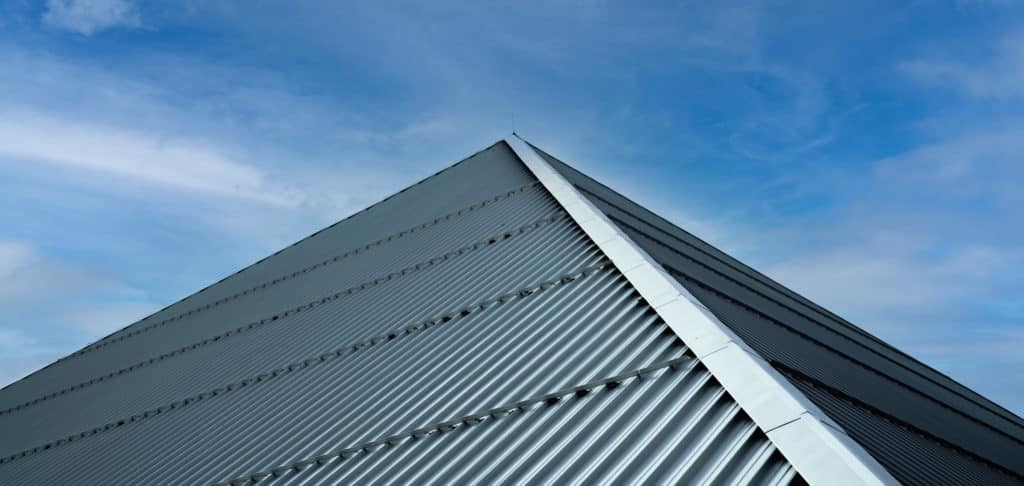Roof flashing is a crucial component of any roofing system, designed to protect the building from water penetration. It plays an important role in preventing leaks and ensuring that the structure remains safe and secure. This article will discuss the fundamentals of roof flashing and its importance for preventing roof leaks.
The purpose of installing roof flashing is twofold: firstly, it provides an effective barrier against water intrusion; secondly, it ensures that rainwater drains away from the structure without causing damage or leakage. To achieve this goal, different types of materials are used depending on their suitability for the particular environment they are being installed. Commonly employed materials include metal sheets, rubber membranes, and tar-based products such as asphalt shingle strips.
In addition to providing protection against moisture infiltration, proper installation of roof flashing also helps regulate airflow by allowing ventilation between adjoining sections of the roof surface. By doing so, condensation problems can be reduced significantly as well as helping reduce energy consumption during hot weather periods due to improved insulation properties.
What Is Roof Flashing
Roof flashing is a thin, waterproof material which is installed around areas of the roof where two sections meet. It helps to seal these places and prevent water from entering around the edges or in any cracks that may exist. By creating an impermeable barrier between two materials, roof flashing prevents leaks and damage to the building by diverting rainwater away from vulnerable points on the roof.
Flashing can be made out of many different types of material such as metal, rubber, plastic or vinyl; depending on its intended use. Metal is typically used for long-term resistance to weathering while rubber and other synthetic materials are used when flexibility is needed at specific points along the roofline. Additionally, some forms of flashing come with adhesive backing which provides additional protection against moisture infiltration. Overall, it is important to ensure that all sections of flashing are properly sealed together to create a continuous barrier against water penetration.
Types Of Roof Flashing
When it comes to preventing roof leaks, roof flashing plays an important role. It is used to create a waterproof barrier that can protect the roof from water infiltration and other damage. This article will look at different types of roof flashing available on the market today.
The most common type of roof flashing is metal flashing, which has been around for centuries and is still widely used today. Metal flashing is often made of galvanized steel or aluminum and is generally sold in rolls or sheets. It can be installed as strips, panels, or even custom-cut shapes to fit any size opening.
Another type of flashings are plastic ones, which are usually made from PVC materials. These are lightweight and cheaper than their metal counterparts but less durable. They also tend to fade quickly when exposed to sunlight over time. There are also rubber flashings available, which provide excellent weatherproofing properties while being flexible enough to move with the building’s structure during its expansion and contraction cycles. Lastly, there are specialized kinds of flashings such as copper flashings that offer greater durability against corrosion due to extreme climates and environments.
Benefits Of Installing Roof Flashing
The installation of roof flashing offers a range of advantages as a way to prevent against leaks. The first benefit is that it can create an extra layer of protection for roofs, especially on those with multiple angles or ridges. This additional layer helps protect the bonds between different sections and prevents water from entering vulnerable areas. Furthermore, installing flashings also provides improved insulation efficiency due to its reflective properties which can reduce energy costs and expenses associated with cooling in warmer climates.
In addition, when properly installed, roof flashing improves the lifespan of the entire structure by providing support to joints along rafters and trusses. By strengthening these areas, the building will become more resistant to environmental damage such as rain or wind-driven debris. Consequently, this reduces maintenance needs over time and results in cost savings both short-term and long-term.
Overall, roof flashing has many benefits in terms of creating an effective barrier against potential leaks while also improving longevity and reducing ongoing maintenance requirements.
Proper Installation And Maintenance Of Roof Flashing
The proper installation and maintenance of roof flashing is an important step in preventing roof leaks. Flashing materials such as sheet metal, rubber membrane, or vinyl can be used to cover joints where the roof meets walls or other protrusions. The most common areas for installing flashing are around chimneys, vent pipes, dormers, valleys, eaves and skylights. To ensure a proper fit that will effectively prevent water infiltration, it is essential to measure each area carefully before cutting the material to size. Additionally, nails should be placed at least two inches away from the edge of the flashing to avoid potential splits or cracks.
To maintain effective protection against roof leakages due to weather conditions or normal wear-and-tear over time, regular inspections and repairs should also be performed on existing flashings. Sealing any gaps between edges with caulk every few years may help extend its lifespan even further. If necessary, replace old components with new ones in order to ensure maximum efficiency of the system. Taking these steps can result in significant savings by eliminating costly repair bills associated with damages caused by leaking roofs.
Common Causes Of Roof Leaks
The purpose of roof flashing is to protect the vulnerable areas of a building’s roof from water intrusion. Despite its importance, improper installation or maintenance of roof flashing can lead to leaks and other potential issues on the roof. There are several common causes of roof leaks that should be taken into consideration when assessing a building’s vulnerability to water damage.
Inadequate sealing around joints in the flashings, such as those between two different materials or at intersections between walls and roofs, is one common cause of leaking roofs. Improperly installed or corroded fasteners may also contribute to these types of problems. Additionally, environmental factors like wind-driven rain, ice dams during winter months, and debris buildup can all increase the risk for leakage if not addressed properly. Taking preventive measures against these factors will help ensure that your roof remains watertight over time.

How Roof Flashing Can Help Prevent Roof Leaks
One of the most effective methods to prevent roof leaks is through the use of roof flashing. This involves creating a physical barrier between different types of materials on the roof as well as providing protection from water seeping in between each material and causing damage. Roof flashing can be made from metal, plastic or rubber depending on its purpose and location. It comes in various shapes such as L-shaped, T-shaped and U-shaped pieces that fit together like puzzle pieces to create a waterproof sealant for the roofing system. Flashing also helps keep debris out by preventing it from entering into gaps caused when two pieces are joined together.
In addition to protecting against water infiltration, roof flashing can help reduce energy costs due to its ability to reflect sunlight away from the building’s interior. Reflecting more heat back outside instead of being absorbed into the structure reduces air conditioning bills during summer months. Furthermore, proper installation will ensure that your roof stays durable over time with fewer repairs needed compared to roofs without any type of protection from rainwater or other elements. Overall, adding roof flashing is an important step towards ensuring a long lasting and reliable roofing system for your home or business premises.
Choosing The Right Roof Flashing For Your Home
Roof flashing is an important factor in preventing roof leaks. It can be used to bridge the gap between the roof and chimney, wall, or other objects that protrude through it. As such, choosing the right type of roof flashing is essential for providing effective protection against water infiltration.
When selecting a material for roof flashing, consider its resistance to UV radiation, temperature extremes, corrosion and wind-driven rain. Corrosion-resistant materials are especially important in coastal areas as sea salt corrosion may lead to premature failure of even the best-made roofs. Additionally, keep in mind how much maintenance will be required over time; some materials require more frequent painting or coating than others do. Finally, choose colors that match your existing home exterior so that you won’t have any visual discrepancies on your roofline. Carefully following these steps can help ensure that your chosen roof flashing will provide long lasting leak prevention benefits for years to come.




